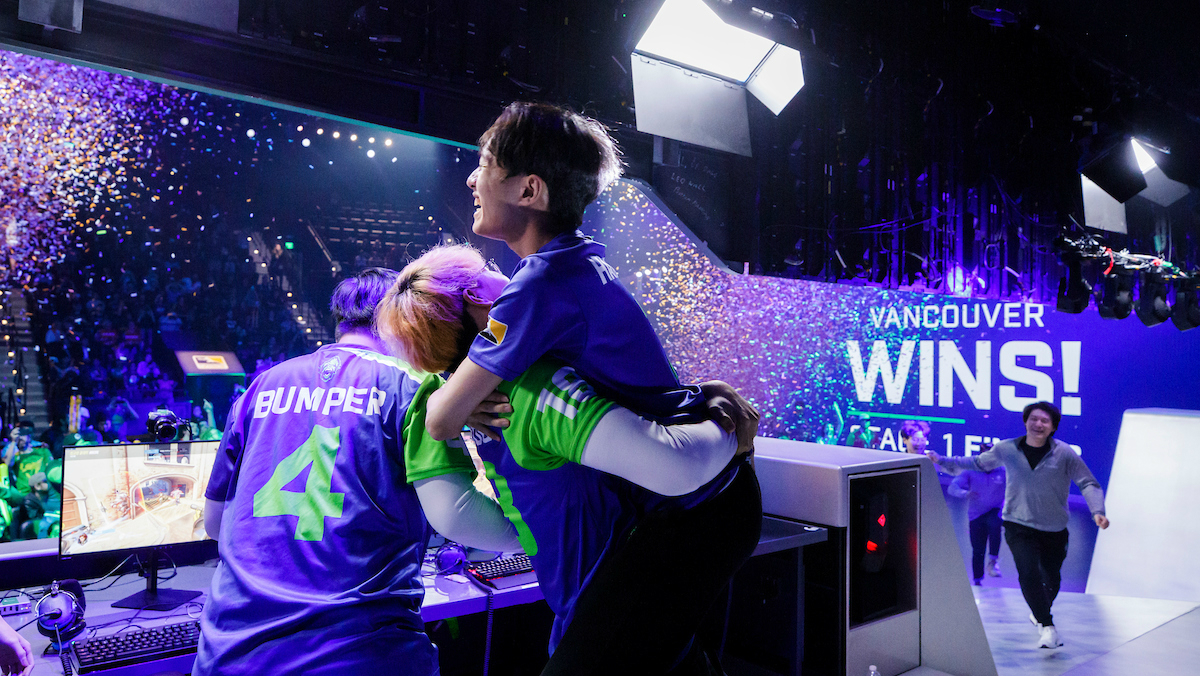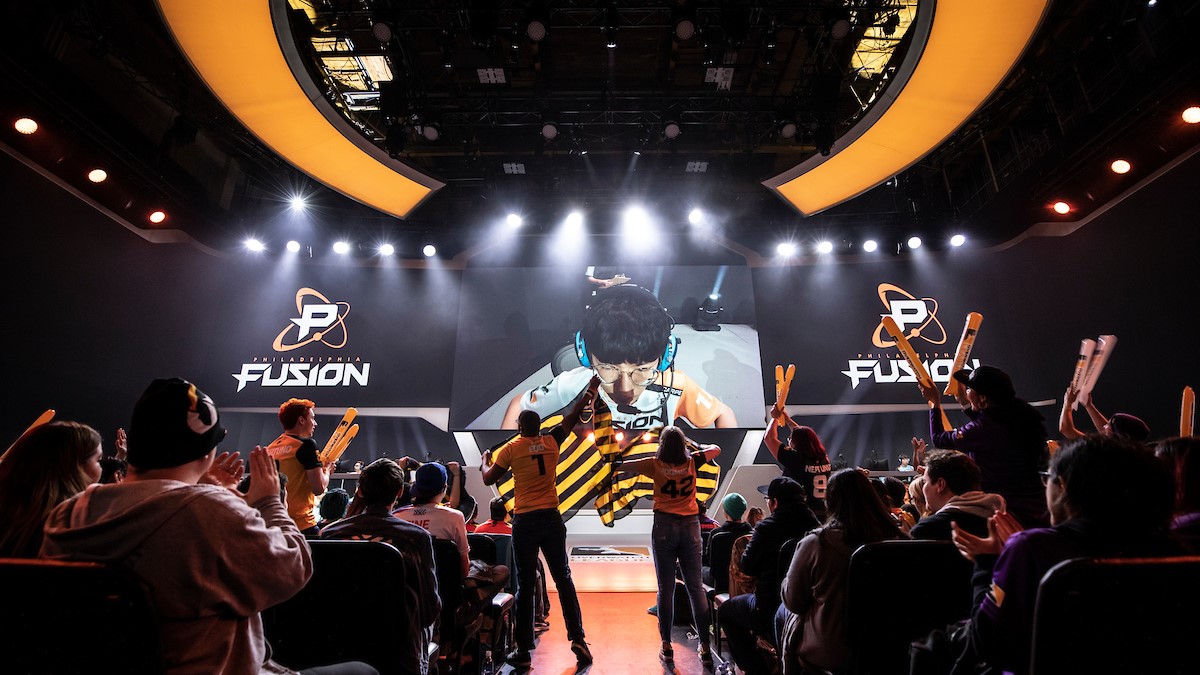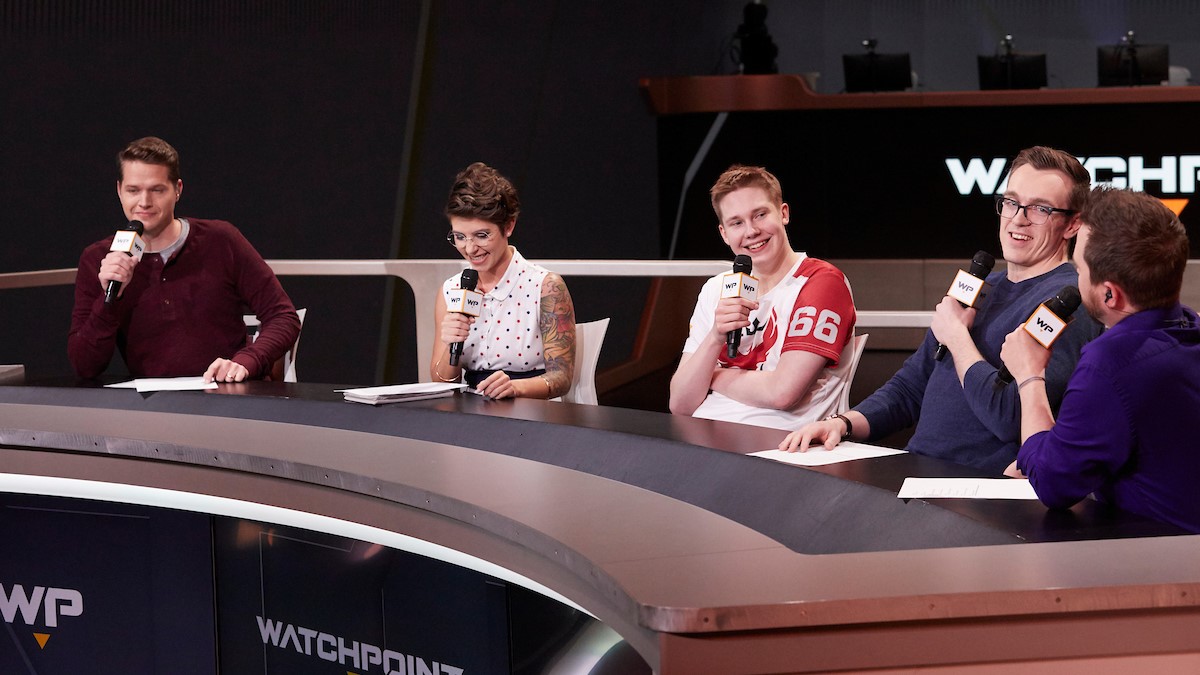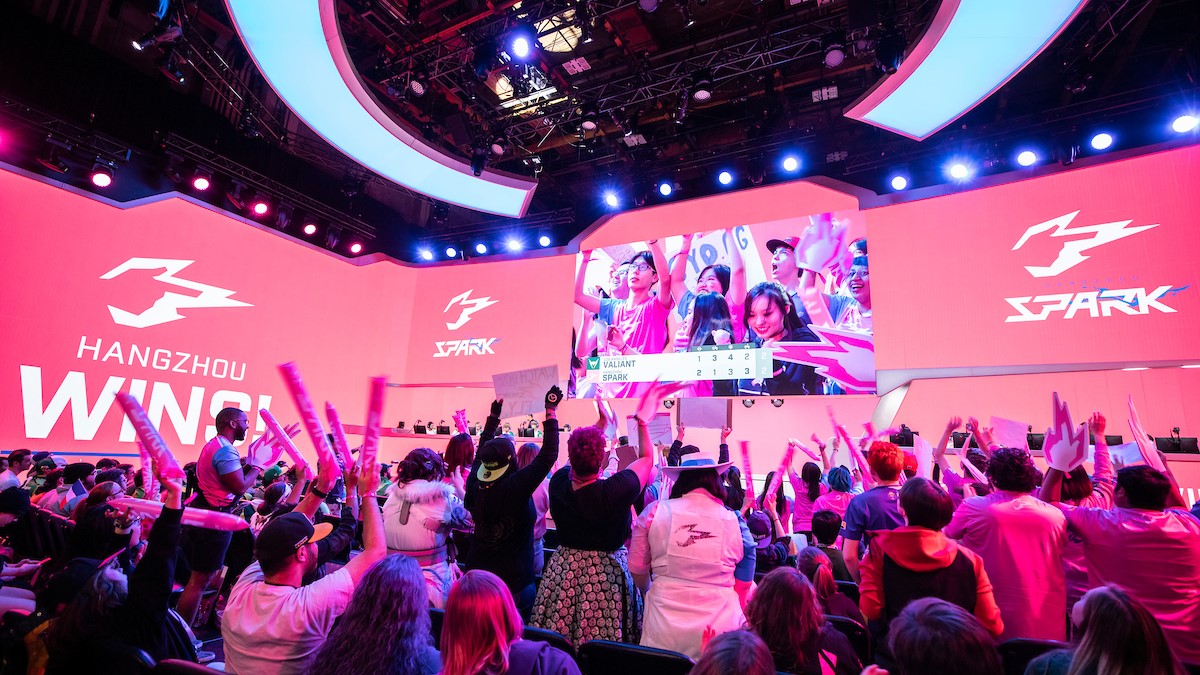Why You Should Watch the Overwatch League Again

Update July 19: Blizzard has officially announced that the Overwatch League will adopt a 2-2-2 role lock starting in Stage 4. This means teams will be forced to play in a composition with two tank, two support and two damage-dealing heroes.
I can't believe they pulled it off. The struggling Los Angeles Valiant dismantled the Vancouver Titans, the undisputed league leaders who had been undefeated in the regular season until this June 23 match. A victory equivalent to the Cleveland Browns crushing the New England Patriots, this was an upset that not even the best analysts could have predicted.
There seem to be more of these unpredictable moments in the last few weeks of Overwatch than in the entire first half of the season. Ten days prior, the Houston Outlaws took down the Stage 2 winners in the San Francisco Shock, who later lost to the Chengdu Hunters in a five-match marathon.
These unlikely triumphs aren't random. A fundamental change in the league is threatening to break the shackles that have held it back over the past few months. With an evolving meta and growing parity among the 19 teams, the Overwatch League is finally worth watching again --- and things are only getting started.
A changing meta
The first season of the Overwatch League was a huge success. Viewership was better than expected with an average of more than 144,000 concurrent viewers in the opening weeks, and the talent on display had fans coming back for the epic moments that happened on a game-by-game basis.
Additionally, team compositions were varied and constantly changing, which led to some memorable moments, like sniper duels between London Spitfire's Kim 'birdring' Ji-hyeok and Jae-hyeok "Carpe" Lee or Joon-yeong "Profit" Park blinking through mid-air as Tracer then eliminating an enemy with a single clip. The league felt fresh, all the way up to the Grand Finals, a spectacle filled with everything we love about sports tournaments: the Cinderellas, nail-biting action and fanatical fans.
But by the midway point of Season 2, the things that made the OWL so addicting had vanished. I found myself less invested in the regular season games, and many of my friends had stopped watching. People were getting burned out. Not because the game was aging but by how it was being played at the top level.
Get instant access to breaking news, the hottest reviews, great deals and helpful tips.
That decline can be traced back to the meta. The term "meta" is used in video games to describe a dominating strategy believed to provide the highest win probability. In Overwatch, meta is synonymous with hero composition, or which six character teams chose to play as.

Since the start of Season 2, the dominating meta has been what is often referred to as GOATS, a strategy that involves three tanks, three healers and no damage-dealing (or DPS, for "damage per second") heroes. Nearly every OWL match playing in the first half of this season was fought in a "mirror" composition between the same lineup of heroes: D.Va, Reinhardt, Zarya, Brigitte, Lucio and Zenyatta.
What that meant is every game felt more or less the same. Teams used the same strategies, deploying the same ultimates in the same order, often canceling each other out. Not only did these matches lack variation, but the characters just weren't fun to watch. Zarya's laser beam doesn't require a ton of skill, D.Va's potentially devastating ultimate is only used to as a survival tactic, and Brigitte's value comes from throwing an armor pack at an injured enemy.
Even some of the players were getting bored. Houston Outlaws support player Rawkus admitted as much to ESPN, "I think people are sick of 3-3 and they want to find new strats, new heroes or play DPS comps. You have to have fun in this game, and I think people get bored with the same stale thing."

Fortunately, a slow but unmistakable shift away from that meta has emerged in the past few stages. And DPS players are back in style. It all started with Sombra, the invisible hackers whose nearly defenseless EMP results in instant eliminations. This spawned the "Sombra GOATS" meta, which replaced Sombra with D.Va and opened the door for Ana as the third support hero.
The Sombra GOATS meta led to all sorts of crazy tactics as teams searched for a counter to the new composition Widowmaker, Hanzo and Pharah --- some of the most fun heroes to watch --- are becoming regulars on several maps, while previously unused characters in OWL, including Ashe, Soldier 76, Reaper and Mcree, have all made appearances.
The new faces are making the league a lot more enjoyable to watch. Snipers are pulling off incredible shots while Pharah players are going uncontested, raining down missile fire onto enemies. The response to that success has been equally fascinating. Some teams stubbornly stick with their comfortable 3:3 meta, only to get handily crushed, while others make quick changes to counter the unexpected enemies.
All these changes make Overwatch finally feel like the strategy game it's been striving to be since the beginning.
Greater parity, greater unpredictability
In the inaugural season of Overwatch, the Shanghai Dragons lost 40 straight matches and finished the year without a single win. Dragons matches were worth watching in the early stages until it became obvious that an elusive first win was never coming. This year, the Dragons sit at 11 and 8 and are holding onto a playoff wild-card spot.

There is such parity in the league that any team can win on any given day, no matter who they face. That uncertainty has gotten me to tune into a match that might seem like a blowout on paper.
That's not to say that these results are completely random. The league crucially has favorites in the Vancouver Titans, San Francisco Shock and New York Excelsior along with bottom dwellers, like the Florida Mayhem and Washington Justice. But even those struggling sides are nowhere near as outmatched as Shanghai was last year.
Take a closer look at the middle of the overall Season 2 standings and you'll see a crowded race for the final few playoff spots. Eight teams are within one game of each other as they vie for an automatic playoff spot or at least a high seed in the play-in bracket. Because of this, nearly every remaining OWL match in Stage 4 influences which teams get a shot at the $1 million prize.
An uncertain future, at the mercy of Blizzard
A day after I started writing this, reports surfaced that Blizzard will force the end of the 3-3 GOATS meta by "role locking" teams into a two supports, two tanks and two damage dealers composition.

While this seemed like an obvious move a few months ago, the organic progress the league has made recently has me wary about the rumored change. Restricting teams to only play as certain characters could stunt creativity. You also have to question the timing. The top teams have spent countless hours perfecting the GOATS meta, only for things to change shortly before the finals stage.
I also fear the rule change will inevitably lead to mirror compositions once teams figure out the new meta but that there will be only so many variations available to break that pattern.
That may take some time, so if Blizzard does implement the changes before Stage 4, we could be in for one epic Finals tournament.
Phillip Tracy is the assistant managing editor at Laptop Mag where he reviews laptops, phones and other gadgets while covering the latest industry news. Previously, he was a Senior Writer at Tom's Guide and has also been a tech reporter at the Daily Dot. There, he wrote reviews for a range of gadgets and covered everything from social media trends to cybersecurity. Prior to that, he wrote for RCR Wireless News covering 5G and IoT. When he's not tinkering with devices, you can find Phillip playing video games, reading, traveling or watching soccer.
